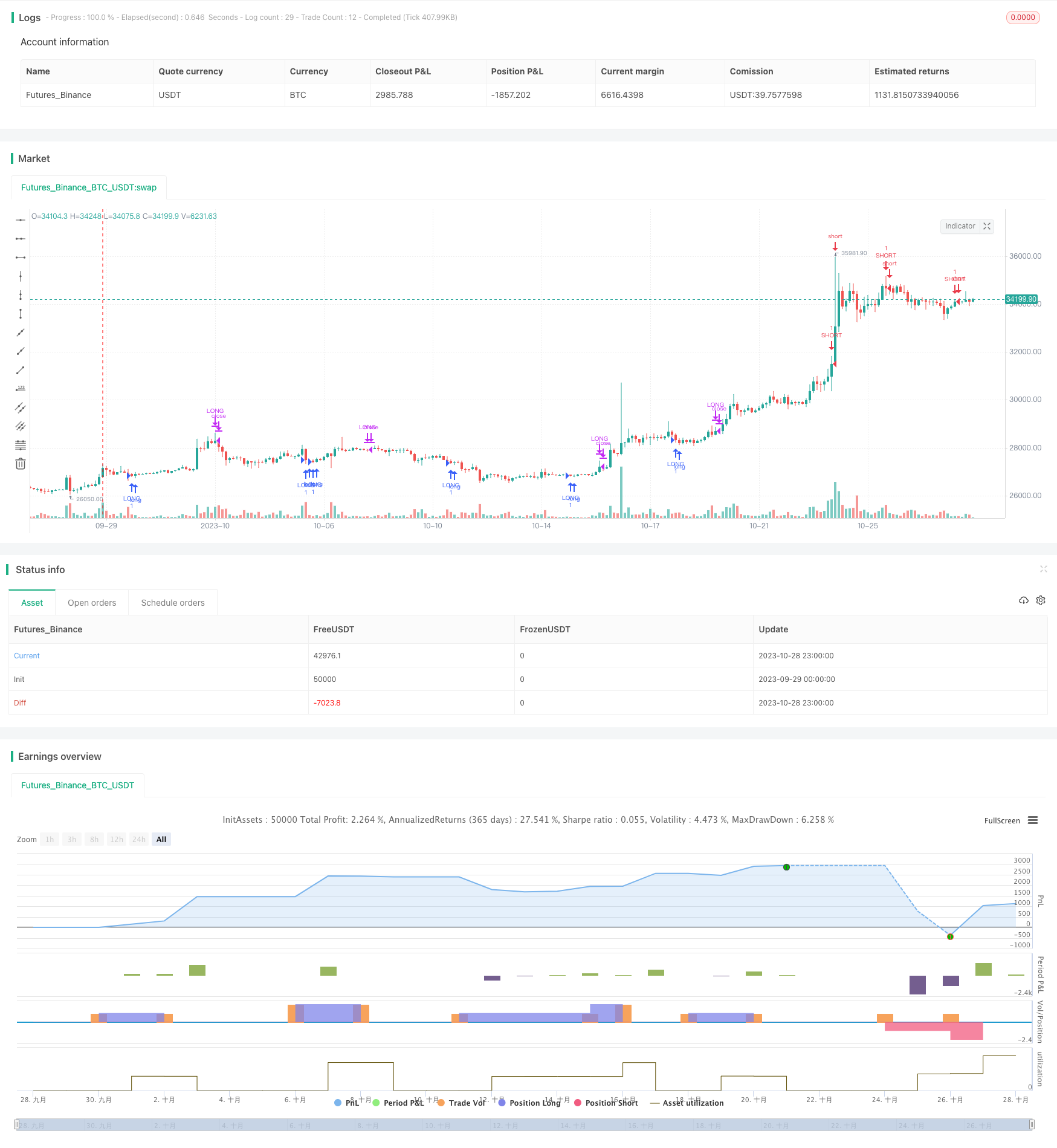
该策略基于量价弥长计指标设计交易信号,可实现对市场买卖力量的判断。
策略原理
量价弥长计指标(VB)反映了成交量变化对价格的推动力。它的构造思路是:
计算典型价格的日内波动率代表价格变动力量。
通过成交量和价格波动力量的乘积,判断收盘时的买卖力量。
指标数值在0轴上下波动,多空力量的测量依据是指标数值的正负。
本策略构建VB指标,并设定信号线。当VB指标上穿信号线时产生买入信号;当VB指标下穿信号线时产生卖出信号。
代码主要步骤如下:
计算典型价格的日内波动率inter作为价格变动力量。
设置波动力量的截断范围coef,超出该范围的波动力量归为coef。
计算截断后的量化力量vcp。
求和vcp获得量化指标vfi。
设置信号线长度signalLength,获得信号线vfima。
比较VB指标vfi和信号线vfima,产生交易信号。
策略优势
该策略具有以下优势:
利用量价关系判断市场买卖力量,不受价格本身的影响。
可设置参数控制量化力量的计算范围,避免异常波动的影响。
结合VB指标本身与信号线的比较,可设定合理的入场时机。
指标计算方法简单清晰,易于实盘操作。
可自定义指标参数和信号线参数,优化策略效果。
策略风险
该策略也存在一些风险:
VB指标对价格异常波动敏感,需要适当设置截断参数。
股价背离指标信号的概率较大,应避免盲目跟单。
需要适当优化指标参数及信号线参数,防止产生假信号。
适用于具有明显量价特征的品种,不宜应用于流动性差的品种。
需关注指标发散的情况,可能预示着市场反转。
可通过调整参数范围、结合其它指标进行过滤、适当宽松止损来控制风险。
策略优化方向
该策略可以从以下方面进行优化:
优化量化力量的计算参数,平衡灵敏度和平稳度。
优化信号线参数,平衡延迟和噪音。
增加Volume Spread Analysis等指标进行效果验证。
增加趋势及支撑阻力指标,避免不利方向交易。
设定动态止损机制,根据市场波动程度调整止损点。
采用机器学习方法训练最优参数组合。
在多品种及不同周期上进行回测,评估策略稳健性。
比较不同指标参数对收益曲线的影响,寻找最优参数。
总结
该策略基于量价弥长计指标,对买卖力量进行判断。它具有指标设计简单、参数可调整等优点,也存在一定的假信号风险。通过参数优化、规避不利市场等措施,可以提高策略稳定性。后续可从多角度继续优化和验证该策略,提升实盘效果。
/*backtest
start: 2023-09-29 00:00:00
end: 2023-10-29 00:00:00
period: 3h
basePeriod: 15m
exchanges: [{"eid":"Futures_Binance","currency":"BTC_USDT"}]
*/
//@version=3
strategy("VB Strategy", overlay=true)
length = input(130, title="거래량 길이")
coef = input(0.2, title="계수")
vcoef = input(2.5, title="최대 계수")
signalLength=input(5)
smoothVFI=input(false, type=bool, title="부드럽게")
//볼밴
length2 = input(20, minval=1, title="볼밴 길이")
ma(x,y) => smoothVFI ? sma(x,y) : x
typical=hlc3
inter = log( typical ) - log( typical[1] )
vinter = stdev(inter, 30 )
cutoff = coef * vinter * close
vave = sma( volume, length )[1]
vmax = vave * vcoef
vc = iff(volume < vmax, volume, vmax)
mf = typical - typical[1]
vcp = iff( mf > cutoff, vc, iff ( mf < -cutoff, -vc, 0 ) )
vfi = ma(sum( vcp , length )/vave, 3)
vfima=ema( vfi, signalLength )
d=vfi-vfima
upper = vfima + stdev(vfi, length2)
lower = vfima - stdev(vfi, length2)
buysignal = cross(vfi, lower) and crossunder(vfi, lower) == 1 ? vfima : na
sellsignal = cross(vfi, upper) and crossover(vfi, upper) == 1 ? vfima : na
//times = timestamp("GMT+6", 2017, 12, 6, 00, 00)
//if (buysignal and times <= time)
if (buysignal)
if(strategy.position_size < 0)
strategy.close("SHORT")
if(strategy.position_size > 0)
strategy.order("LONG", true, 1, when = (low+high)/2)
if(strategy.position_size == 0)
strategy.entry("LONG", strategy.long, when = (low+high)/2)
//if (sellsignal and times <= time)
if (sellsignal)
if(strategy.position_size > 0)
strategy.close("LONG")
if(strategy.position_size < 0)
strategy.order("SHORT", false, 1, when = (low+high)/2)
if(strategy.position_size == 0)
strategy.entry("SHORT", strategy.short, when = (low+high)/2)